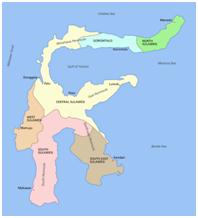Significance of world’s oldest cave painting discovered in Indonesia
- Posted By
10Pointer
- Categories
History & Culture
- Published
15th Jan, 2021
-
A team of archaeologists has discovered what may be the world's oldest known cave painting dating back to more than 45,000 years.
Context
- A team of archaeologists has discovered what may be the world's oldest known cave painting dating back to more than 45,000 years.
Key features of the painting
- The cave painting depicts a wild boar endemic to the Sulawesi island of Indonesia, where the painting was found.
- It dates back to more than 45,000 years
- The painting was made using red ochre pigment.
- These pigs have been hunted by humans for tens of thousands of years and are the most commonly depicted animal in the ice age rock art of the island.
The Sulawesi island
- Sulawesi is also known as Celebes.
- It is one of the four Greater Sunda Islands which are recognized as Borneo, Java, Sulawesi and Sumatra.
- It is governed by Indonesia.
- The central Indonesian island is situated between Asia and Australia and has a long history of human occupation.
- It occupies an area of over 174,000 sq. km.

|
What is the significance of the cave painting?
- It shows the oldest evidence for the presence of hominins beyond the southeastern limits of the Ice Age Asian continent.
- It depicts the food habit of Hominins which includes the boars as food.
- The painting is a form of creative thinking and artistic expression at that time.
Hominins
- Hominins include modern humans, extinct human species and our immediate ancestors.
- Homo sapiens are the first modern humans who evolved from their hominid predecessors between 200,000-300,000 years ago.
- It is estimated that these modern humans started migrating outside of Africa some 70,000-100,000 years ago.
|
How did the archaeologists date it?
- Archaeologists used a method called U-series isotope analysis, which uses calcium carbonate deposits that form naturally on the cave wall surface to determine its age.
- They used a calcium carbonate deposit, also referred to as“cave popcorn” that had formed on the rear foot of one of the pig figures.


